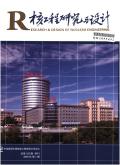Numerical Analysis of Single-Phase Thermal Hydraulic Parameters Along Nanostructured Coating Film
引用次数: 0
Abstract
In typical pressurized water reactors, zirconium alloys are used as cladding material for the fuel. However, zircalloy is known to face problems with the high temperature steam, due to the chemical process of oxidation, the oxygen molecules will be separated from the water molecules of the coolant leading to hydrogen gas releases. Recently, a research team at KAIST, South Korea suggested a methodology to fabricate nanoporous oxide layer with the aim of preventing the zircalloy outer surface from reacting with the coolant. Although, this new proposal offers a better solution to prevent the potential hydrogen gas generation, it is still not well understood how the nanoporous-layer is going to affect the convective heat transfer rates between the coolant and the fuel. In fact, on one hand the low conductivity of the oxide layer is expected to reduce the conduction heat transfer within the cladding material; but on the other hand, the nanopores on the oxide layer might act as an effective surface roughness, hence affecting both the hydrodynamic and thermal fields within the coolant channels. In this study, a CFD analysis is carried out to investigate the influence of this nanoporous layer on the convective heat transfer rate and pressure drop coefficient. A detailed 2-D steady-state numerical analysis on single-phase model is performed using Star-CCM+ code. The study is conducted using pores with a diameter of 30 to 100 nm. The results obtained from these predictions are then compared with the ones obtained in the case of the smooth surface. Therefore, the main objectives of the present study are to examine the effect of this nanopourous layer on the thermal hydraulic parameters and to produce the corresponding correlations to be used in the system scale thermal-hydraulic codes.纳米结构涂层的单相热液参数数值分析
在典型的压水堆中,锆合金被用作燃料的包层材料。然而,锆合金面临着高温蒸汽的问题,由于氧化的化学过程,氧分子会从冷却剂的水分子中分离出来,导致氢气释放。最近,韩国科学技术院(KAIST)研究小组提出了一种制造纳米多孔氧化物层的方法,其目的是防止锆合金的外表面与冷却剂发生反应。尽管这个新方案提供了一个更好的解决方案来防止潜在的氢气产生,但人们仍然不太清楚纳米多孔层是如何影响冷却剂和燃料之间的对流传热率的。事实上,一方面,氧化层的低电导率有望减少包层材料内部的传导传热;但另一方面,氧化层上的纳米孔可能作为有效的表面粗糙度,从而影响冷却剂通道内的水动力场和热场。本研究通过CFD分析研究了纳米多孔层对对流换热率和压降系数的影响。利用Star-CCM+程序对单相模型进行了详细的二维稳态数值分析。该研究使用直径为30至100纳米的孔进行。然后将从这些预测中得到的结果与光滑表面情况下得到的结果进行比较。因此,本研究的主要目的是研究这种纳米多孔层对热水力参数的影响,并产生相应的相关性,用于系统尺度的热水力规范。
本文章由计算机程序翻译,如有差异,请以英文原文为准。
求助全文
约1分钟内获得全文
求助全文

 求助内容:
求助内容: 应助结果提醒方式:
应助结果提醒方式:


